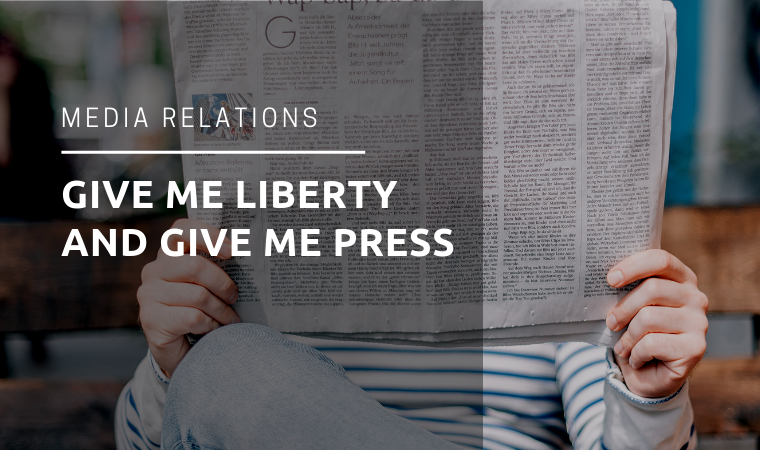Today, anything we’ve ever wanted to know is right at our fingertips (quite literally). But with ultra-easy access comes the frequent circulation of misinformation and the rise in discourse on limiting freedom of speech.
The freedom of the press is the First Amendment to the Constitution. Exercising free speech means having the right to publish and circulate news and opinions without censorship from the government and fear of persecution.
It is the duty of media outlets to inform citizens and give them the power to make informed decisions that keep the fire of democracy burning.
Point is, news is important and the work of journalists is a hefty ordeal. So how can we, as public relations professionals, make sure we give the press content worth publishing? By providing them with relevant angles, data and sources.
The Relevance of an Angle
Journalists get a never-ending stream of emails that clog their inbox. As a PR professional, it’s important to find a relevant angle that suits their beat and piques their interest. Research what topics a reporter has previously covered and understand their writing style and voice. Be careful, though, to offer a reporter a fresh take on a topic that they have previously covered. You have to make the angle unique and ask yourself the following questions:
Why would they want to cover this story?
Why is this story important?
What value does this angle have to their readers?
What makes this story unique?
The Drive for Data
It’s not enough to provide a unique angle. With companies battling to get their promotional information to the top of websites and newsfeeds, you have to offer evidence-based claims by providing data. Data will help you legitimize your angle and elevate your brand. Make sure the data is timely. You’ll want to tie it into your relevant angle and provide a recap of the important points. Make sure it’s specific and cited – that way the journalist knows you’re providing real data and can understand the source of information.
The Need for Expert Sources
Now that the journalist has a relevant angle and data for reference, how do they put this data into words. PR professionals need to provide a face to the information by offering expert sources to comment and explain what it all means. Journalists may not be data scientists, so providing them with subject matter experts will help them put the story into perspective and communicate the information in an easy-to-read format for their audience.
The Review Process
A reporter won’t always share an article with you for review in an effort to maintain objectivity. They never want their story to sound promotional.
They may, however, share some information for fact-checking purposes. In this case, it’s your job to make sure all the data, quotes and general information is accurate. If you flag an incorrect fact, don’t hesitate to reach out to the reporter for corrections. They will gladly update the article to ensure they are communicating accurate information to their readers.
Your Role in the Freedom of the Press
The freedom of the press is core to our democracy. Understanding what journalists need and providing them with relevant angles, data and expert sources can help make their job easier. This also gives you and your clients the opportunity to communicate your story to the public in a legitimate and thought-provoking way.
